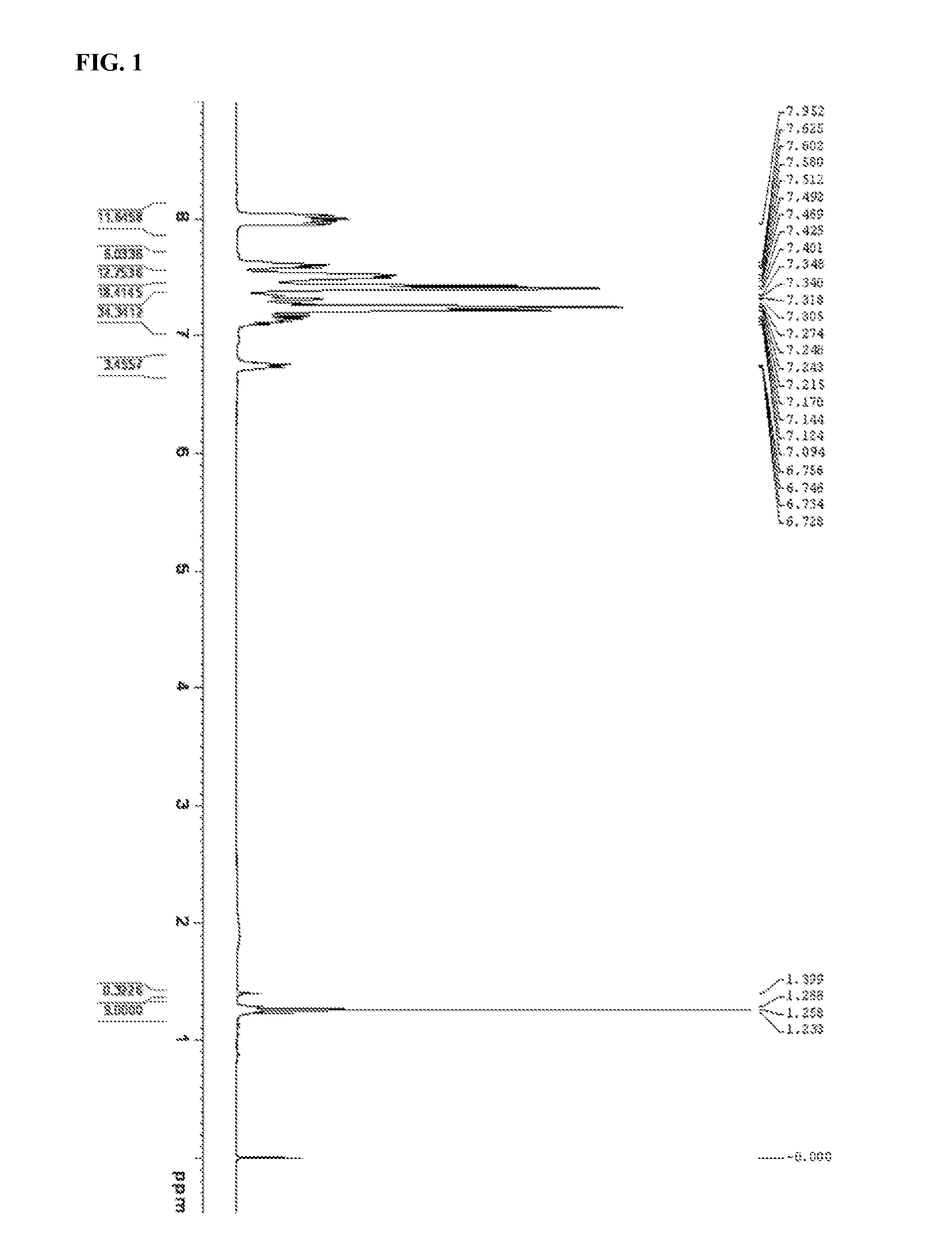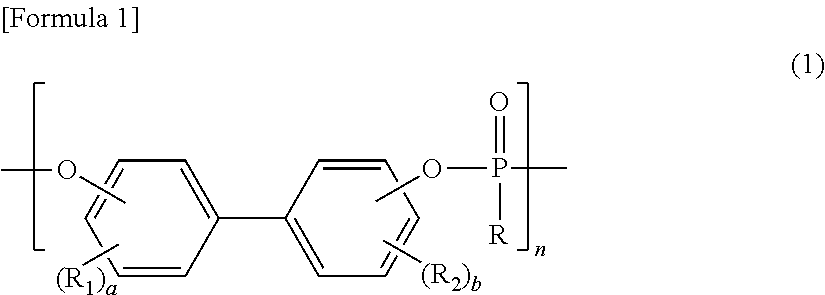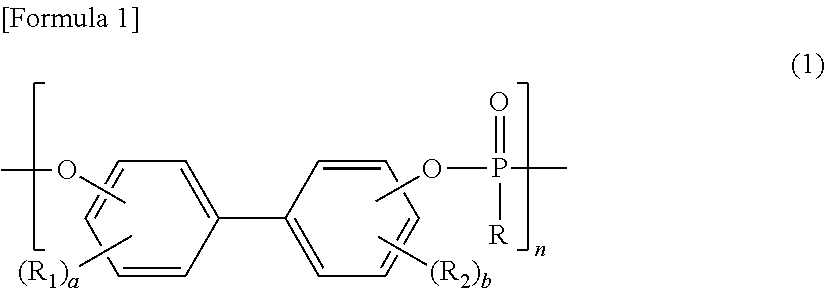Biphenyl Polyphosphonate, Method for Preparing the Same and Thermoplastic Resin Composition Including the Same
a biphenyl polyphosphonate and polyphosphonate technology, applied in the field of biphenyl polyphosphonate, can solve the problems of volatile monomer phosphorus flame retardants, poor appearance of plastics, environmental pollution, etc., and achieve good flame retardancy, good flame retardancy, good physical properties balance, good heat resistance
- Summary
- Abstract
- Description
- Claims
- Application Information
AI Technical Summary
Benefits of technology
Problems solved by technology
Method used
Image
Examples
preparation examples 1-3
Preparation of Biphenyl Polyphosphonates
preparation example 1
[0098]1 equivalent of a biphenol (Songwon Industrial Co., Ltd., Korea), 0.1 equivalents of 4-t-butylphenol as an end-capping agent, and 0.01 equivalents of aluminum chloride are added to chlorobenzene whose amount was 6 times larger than that of the biphenol. The mixture is heated to 131° C., and then 1 equivalent of phenylphosphonic dichloride (Acros) is added dropwise thereto to initiate the reaction. After the dropwise addition is finished, the resulting mixture is further stirred for 2 hr. After completion of the reaction, the reaction mixture is cooled to 80° C., washed with a 10% aqueous hydrochloric acid solution, and washed twice with water. Thereafter, the aqueous layer is discarded and the organic layer is distilled under reduced pressure, affording a biphenyl polyphosphonate as a product in a yield of 99%. NMR data (300 MHz, Bruker) for the polymer are shown in FIG. 1.
preparation example 2
[0099]The procedure of Preparation Example 1 is repeated, except that 4-t-butylphenol is used in an amount of 0.2 equivalents.
PUM
| Property | Measurement | Unit |
|---|---|---|
| PDI | aaaaa | aaaaa |
| PDI | aaaaa | aaaaa |
| heat resistance | aaaaa | aaaaa |
Abstract
Description
Claims
Application Information
 Login to View More
Login to View More - R&D
- Intellectual Property
- Life Sciences
- Materials
- Tech Scout
- Unparalleled Data Quality
- Higher Quality Content
- 60% Fewer Hallucinations
Browse by: Latest US Patents, China's latest patents, Technical Efficacy Thesaurus, Application Domain, Technology Topic, Popular Technical Reports.
© 2025 PatSnap. All rights reserved.Legal|Privacy policy|Modern Slavery Act Transparency Statement|Sitemap|About US| Contact US: help@patsnap.com



